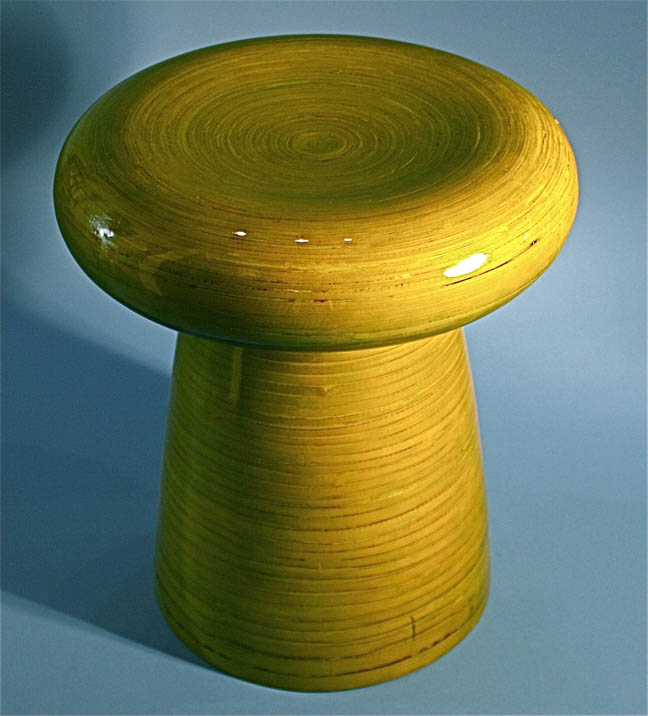

Title: Contemporary Handmade Bamboo Design Green Sitting Stool Chair
Shipping: $35.00
Artist: N/A
Period: Contemporary
History: N/A
Origin: Southern Asia > Vietnam
Condition: Excellent
Item Date: 2010
Item ID: 4321
A contemporary design made by hand, this is a Beautiful, Stylish Home Furnishing & Accent. Spun Bamboo Stool - Acacia A splash of vibrant color, our bamboo stool is extra seating, a side table, or a place to rest your feet. Made in Vietnam from renewable bamboo, lacquered by artists skilled in this traditional craft. Natural, beautiful, and handy for the bath, bedroom, sunroom, or porch. 16" diameter, 18" high. *All of the art is edited and chosen by us for its high quality and workmanship before posting. These collectibles have been selected with the artist & collector in mind. We are committed to enhancing our customer’s lives by discovering creating, and pointing out only the best art we can find in the world today. We Are Taste-Makers, Art Advisers, Consultants & Publishers Of Spectacular Art Stories. Our job is to be intermediaries between buyers and sellers. We are vetting for high end art patrons. We are determined to catalog the world's most exceptional art and share it with everyone.
Link: http://en.wikipedia.org/wiki/Bamboo
Bamboo is a group of perennial evergreens in the true grass family Poaceae, subfamily Bambusoideae, tribe Bambuseae. Giant bamboos are the largest members of the grass family. There are many types of bamboo, such as 'Fargesia Qinlingensis' in the Qinling Mountains in China.
In bamboo, the internodal regions of the stem are hollow and the vascular bundles in the cross section are scattered throughout the stem instead of in a cylindrical arrangement. The dicotyledonous woody xylem is also absent. The absence of secondary growth wood causes the stems of monocots, even of palms and large bamboos, to be columnar rather than tapering.
Bamboos are some of the fastest growing plants in the world. They are capable of growing 100 cm (39 in.) or more per day due to a unique rhizome-dependent system. However, the growth rate is dependent on local soil and climatic conditions.
Bamboos are of notable economic and cultural significance in East Asia and South East Asia, being used for building materials, as a food source, and as a versatile raw product.
In its natural form, bamboo as a construction material is traditionally associated with the cultures of East Asia and the South Pacific, to some extent in Central and South America and by extension in the aesthetic of Tiki culture. In China, bamboo was used to hold up simple suspension bridges, either by making cables of split bamboo or twisting whole culms of sufficiently pliable bamboo together. One such bridge in the area of Qian-Xian is referenced in writings dating back 960 A.D. and may have stood since as far back as the 3rd century B.C., due largely to continuous maintenance. It has long been used as scaffolding; the practice has been banned in China for buildings over six stories but is still in continuous use for skyscrapers in Hong Kong. In the Philippines, the Nipa Hut is a fairly typical example of the most basic sort of housing that bamboo is used for; the walls are split and woven bamboo and bamboo slats and poles may be used as its support. In Japanese architecture, bamboo is used primarily as a supplemental and/or decorative element in buildings such as fencing, fountains, grates and gutters, largely due to the ready abundance of quality timber.